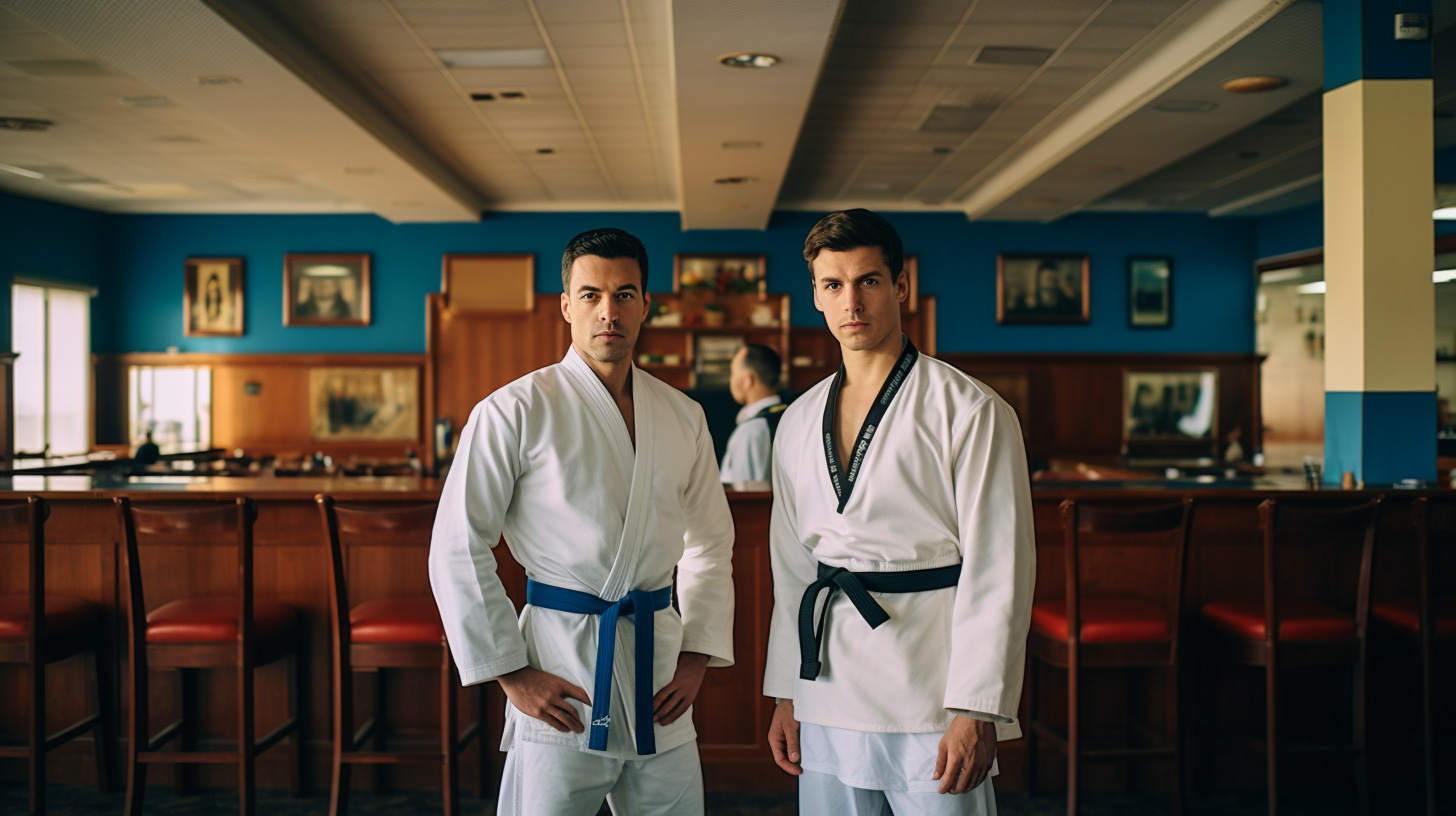When it comes to choosing a martial art for self-defence, two popular options that often come to mind are Karate and Taekwondo. Both disciplines have unique characteristics and training methods, making them effective choices for personal protection. This article will explore the key differences between Karate and Taekwondo and assess which one might be better suited for self-defence purposes.
Karate: The Art of Striking and Blocking
Karate is a martial art that originated in Japan and focuses on strikes, punches, and kicks. Its techniques are designed to disable or incapacitate an attacker through powerful and precise movements. Karate practitioners train extensively in offensive and defensive techniques, making it a well-rounded system for self-defence. The discipline emphasizes quick reflexes, solid stances, and effective close-quarters combat skills.
Taekwondo: The Art of Kicking and Footwork
Originating in Korea, Taekwondo strongly emphasizes high, fast kicks and agile footwork. This martial art is renowned for its dynamic and flashy kicking techniques, making it a popular choice for practitioners interested in acrobatics and athleticism. Taekwondo also incorporates hand strikes and blocks, but it primarily focuses on developing solid legs and explosive kicks, enabling practitioners to keep attackers at a distance.
Critical Differences in Techniques and Training
While both Karate and Taekwondo offer effective self-defence techniques, they differ in various aspects. Karate places equal emphasis on strikes and blocks, providing a more comprehensive range of defensive techniques. On the other hand, Taekwondo prioritizes kicking techniques, which can be advantageous for keeping attackers at bay and maintaining distance. The training methodologies also vary, with Karate emphasizing power and strength, while Taekwondo emphasizes agility and flexibility.
Which one is better for children?
When it comes to choosing a martial art for children, both Karate and Taekwondo can be excellent options. However, there are a few factors to consider when deciding which one might be better suited for children. Both Karate and Taekwondo have different teaching styles and philosophies. Karate often emphasizes discipline, respect, and self-control, which can benefit children’s character development. Conversely, Taekwondo often focuses on building confidence, agility, and coordination through dynamic and energetic movements. Consider which teaching style aligns better with your child’s needs and temperament.
Karate and Taekwondo have different physical requirements. Karate involves a combination of strikes, kicks, and blocks, which can help develop overall strength, balance, and coordination. With its emphasis on high, fast kicks and dynamic movements, Taekwondo can enhance flexibility, agility, and lower-body strength. Assess your child’s physical abilities and determine which martial art complements their strengths and interests.
Can they be harmful?
Karate and Taekwondo, like any physical activity, can carry some risks. However, when taught and practiced under proper supervision and with safety precautions, the risks are minimized, and the benefits of martial arts training far outweigh the potential for harm. Choosing a reputable training center with experienced instructors who prioritize safety and follow appropriate teaching guidelines is essential.
Ensure that the instructors are qualified, experienced, and certified to teach martial arts to children. They should have a good understanding of child development and safety protocols. Look for programs that offer age-specific classes tailored to children’s physical and emotional abilities. Younger children will engage in activities suitable for their age, while older children will participate in more advanced training. Warm-up exercises and stretching are crucial to prevent injuries. Instructors should incorporate adequate warm-up routines and guide children through proper stretching techniques to prepare their bodies for training.
Depending on the intensity of the training, safety equipment such as headgear, mouth guards, shin guards, and gloves may be necessary. Make sure the training facility emphasizes the use of appropriate safety gear during sparring or contact training.
Children should always be supervised during training sessions to prevent accidents and maintain discipline. Instructors should enforce rules regarding behavior, respect, and adherence to safety guidelines.
Which one is cheaper to learn?
The cost of practicing Karate or Taekwondo can vary depending on several factors, including the location, the specific training center, and the level of commitment. It’s challenging to provide an exact comparison as the cost structure can differ from one place to another. However, Karate is generally more affordable than Taekwondo. Here are a few factors to consider regarding the cost:
Equipment Costs: Martial arts training requires specific equipment such as uniforms (gi) and protective gear. The cost of these items can vary, but typically they are one-time purchases. The training center may sometimes provide the essential equipment as part of the membership fees, while others may require you to purchase them separately.
Testing and Belt Advancement: Karate and Taekwondo often have a belt system indicating the practitioner’s skill level. Testing for belt advancement usually incurs additional fees. The frequency and cost of testing can vary depending on the training center and the specific needs of the martial art.
Competition and Events: If you or your child decides to participate in tournaments or events, there may be additional costs involved, such as registration fees, travel expenses, and accommodation. However, participation in competitions is not mandatory and can be an optional aspect of training.
Private Lessons: Some training centers may offer the option of private lessons, which usually come at an additional cost. Private lessons can provide more personalized attention and accelerated progress but are more expensive than group classes.
Choosing the Right Martial Art for Self-Defense
Selecting the appropriate martial art for self-defence depends on personal preferences, goals, and physical abilities. Consider the following factors when making your decision:
Body Type and Fitness Level: If you possess greater upper-body strength and prefer a more well-rounded self-defence system, Karate may be a suitable choice. Alternatively, Taekwondo may better suit your capabilities if you excel in lower-body strength and value agile footwork.
Personal Goals: Reflect on your objectives for learning martial art. Karate’s focus on strikes and blocks may align better with your goals if you seek a practical and efficient self-defence system. Taekwondo may be more appealing if you’re interested in acrobatics, high kicks, and competitive aspects.
Training Environment and Accessibility: Evaluate the availability of reputable dojos or training centers for each martial art in your area. Visit local studios, speak with instructors, and observe classes to determine which training environment aligns with your preferences.
Conclusion
When choosing between Karate and Taekwondo for self-defence, one must consider personal preferences, goals, and physical capabilities. Both martial arts offer practical techniques and training methods, but their differences in emphasis and approach can make one more suitable for specific individuals. Ultimately, the most critical factor is finding a reputable instructor and committing to regular training to develop the skills necessary to protect yourself in various situations.
FAQ
Which martial art is more effective for self-defence?
Both Karate and Taekwondo can be practical for self-defence. However, Karate’s focus on strikes, blocks, and close-quarters combat may make it more practical in real-life scenarios. Taekwondo emphasis on kicking techniques can be advantageous for maintaining distance and preventing close encounters.
Can I learn Karate or Taekwondo solely for self-defence purposes?
Yes, both Karate and Taekwondo can be learned solely for self-defense. While they encompass various aspects, including cultural heritage and competitive elements, instructors can tailor training to focus primarily on practical self-defence techniques.
Are there any age or fitness restrictions for learning Karate or Taekwondo?
People can learn martial arts of various ages and fitness levels. However, it is advisable to consult with instructors and medical professionals to assess any specific considerations, especially for older individuals or those with physical limitations.
How long does it take to become proficient in Karate or Taekwondo for self-defence?
The time required to become proficient varies depending on individual dedication, training frequency, and innate abilities. Generally, it takes several years of consistent practice to develop a solid foundation in martial art and gain practical self-defence skills.

